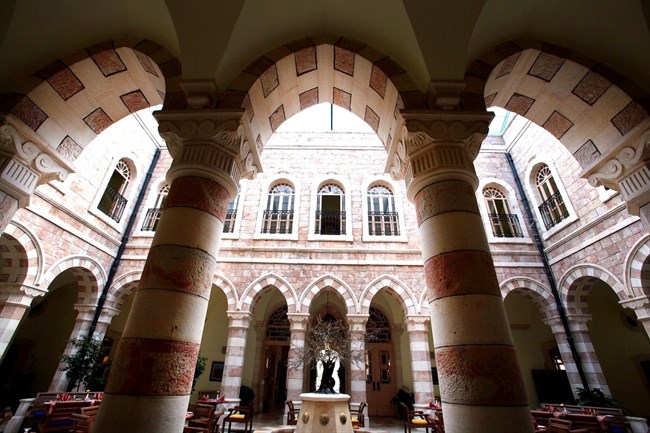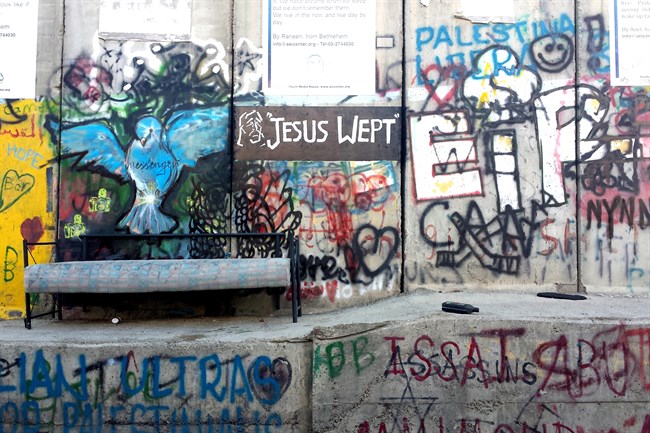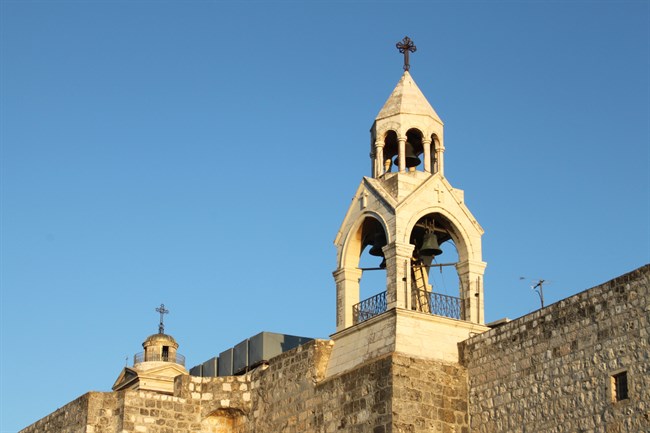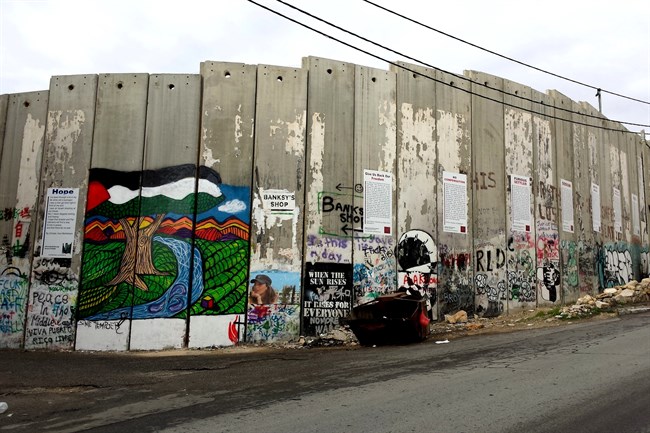By Charlie Hoyle | (Ma’an News Agency) | – –
The pink stone mansions hidden among the modern urban geography of Bethlehem —surrounded by an eight-meter high concrete wall and penned in by Israeli settlements — contain a rich untold history of phenomenal global success:The city’s pioneering 19th century merchants.
In the relative geographical fluidity of the Ottoman Empire, long before the creation of the Israeli state and its subsequent military occupation, a merchant class emerged from the historic Palestinian city which would transport the image of the Holy Land to the rest of the world via devotional objects produced by local craftsmen.
“You would find Bethlehemites in the Philippines, Australia, Sudan, Russia, the Ukraine, and all over the Americas,” Dr. Jacob Norris, a Lecturer in Middle Eastern History at the University of Sussex, told Ma’an.
“It was almost like a brand name you could recognize all over the world.”
The advent of steam travel, railways, and improved technologies of communication in the mid to late 19th century was a critical moment in the growing interconnectedness of the world, and merchants from Bethlehem took full advantage of an era which would lay the foundation for mass consumerism.
Beginning in the 1850s, traders began breaking away from the traditional method of selling devotional objects through the Franciscan Order — who would send the products to Jerusalem where they would be shipped via Acre — instead setting their eyes on newly accessible global markets.
Norris, whose research focuses on Palestinian migration and its connection to global history, says the venture was incredibly successful.
“Holy Bethlehem shops and Holy Land bazaars could be found in Manila, Kiev, and Mexico City. It was a brand name replicated all over the world.”
The products themselves — the basic staples being crucifixes, rosary beads, candlesticks and boxes – had been produced in Bethlehem for centuries, but the city also had a reputation as being an artisanal center, using local forms of carving and distinctive raw materials such as mother of pearl.
“At the higher end of that production you have some exquisite works of art, some of the most amazing works of art to come out of the eastern Mediterranean in the 18th and 19th century.”
The artisanal objects produced in the late 19th century are now a collector’s item — fetching up to $30,000 at auction — and intricate models of Palestine’s churches adorn stately homes and museums across Europe and North America, such as the Palazzo Pitti palace in Florence and the British Museum, Norris says.
“You could say they were commoditizing a whole Holy Land status, and in some way, the whole 19th century is about the commoditization of life.”
Spiritual commercialism
This emerging class, which Norris terms the “nouveau riche” of late 19th and early 20th Palestine, had a profound impact on local social dynamics and power relations.
Older elites, especially from the larger cities in Palestine, had long dominated the landed gentry through their economic, social and political privileges.
“Then you had these new upstarts from Bethlehem who came back and built these lavish mansions in the city,” Norris says.
One notable example is the Jacir palace mansion in Bethlehem, now a hotel, which was built by the merchant Suleiman Jacir in 1910 after amassing a fortune in mother of pearl ornaments.
Underpinning the merchants’ great economic success in foreign markets was a deep-seated spirituality, with the objects holding a real religious value to both the buyers, and sellers.
“They are brilliant merchants, but at the same time in their lives they are deeply religious people with a belief in the magical and the spiritual.”
The story of one of the most successful traders, Jubreal Dabdoub, — who made his fortune in the Philippines and Paris — in particular stands out as a representation of the spiritual momentum behind their fortunes.
In 1909, so the story goes, Dabdoub had been pronounced dead, a victim of typhoid, when Palestinian nun Marie-Alphonsine Ghattas – who was beautified by the Vatican earlier this year — brought him back to life.
The account of the miracle, which is well known among older generations in Bethlehem, recalls that as he lay dead surrounded by mourning relatives and a priest, Ghattas dipped a rosary in holy water and began praying, at which point he came back to life.
“What’s interesting about the account is that it is the power of the rosary that brings him back to life. This is a man who has made his fortune in selling rosaries, but at the same time they have this deep spiritual meaning,” Norris says.
Globalization in reverse
This golden commercial era, which brought huge wealth back to Bethlehem, seems almost unimaginable today, despite the city’s natural positioning as a trade center and tourist destination due to its historical and religious significance.
The steady decline of Palestine’s connection to the world can be traced back to British rule, especially from the mid-1920s, when the British Mandate authorities, like other European colonial states, introduced restrictive citizenship laws and sought to monitor and control the indigenous population.
“You move into an era post World War One where previously the Ottoman Empire, for all of its faults, was a relatively open space, and as French and British rule carves up the region you have this imposition of new borders, and new technologies of border control.”
Britain sought to monitor the new external borders under its control, and the result for Palestinians who had migrated — most notably Christians from Bethlehem and Beit Jala — was that they were now stranded in the Mahjar, or Diaspora.
In the 1920s, over 9,000 Bethlehemites alone applied for citizenship to be able to return to their homes in Palestine, with only 100 accepted by British colonial authorities, Norris says.
“This process just becomes more and more pronounced as you move through the war of 1948 and obviously this division of historic Palestine into what becomes Israel and then the West Bank and Gaza.”
The Oslo Accords of 1993 further divided Palestine into the smaller cantons of Area A, B, and C, the culmination of an historic process of Palestine’s physical disappearance and subsequent restrictions on movement for its population.
“There is an assumption sometimes that the world is becoming more and more globalized as we move forward through history, but in the case of certainly Bethlehem, globalization reached a peak around the turn of the 19/20th century,” Norris says.
For Bethlehem, the success of its Ottoman-era merchants is a stark example of how the process of globalization has run in reverse. The city is cut off from its twin city of Jerusalem by Israel’s separation wall and only accessible via a military checkpoint which requires an Israeli issued permit.
Jewish-only settlements dot the surrounding countryside, limiting the expansion of the city and absorbing agricultural lands, and Palestinian refugees from the 1948 Nakba remain in three densely populated camps in the city.
“Your great, great, great grandfather was moving around from month to month, in and out, between Latin America, East Asia, Bethlehem, and other parts of the Ottoman empire,” Norris says.
“Today it’s much more of a starker choice. Either you stay put and practice sumud (steadfastness), and suffer all of the hardship that it involves, or you migrate and live in the Diaspora. It’s one or the other, it’s not both.”







 © 2025 All Rights Reserved
© 2025 All Rights Reserved